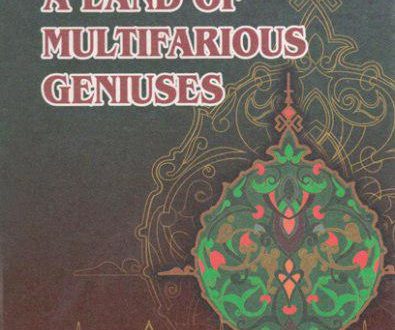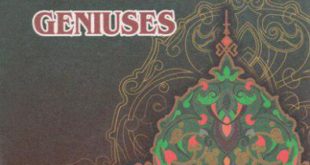Imam al-Bukhari had a soft, pure and well-wishing heart and he was a good natured and benevolent person. Kindness and goodwill was his main principle in his personal life. He hated slander and libel. He hated people who cast aspersion on other people. He used to say: “Since I understood that calumny is the lowest act in the human behaviour, I have never calumniated on another person”.
One of the greatest and praiseworthy features of the character of Imam al-Bukhari was that he was indifferent to the division of Muslims into Shia and Sunna branches. He also did not like those religious people who tried to abuse the confidence of religion and religious people. If to get better acquainted with the mottoes and ideas of his famous book “Sahih”, we can see that he had chosen materials for his book very carefully and attentively. There is no erroneous idea concerning the branch as Shia and Sunna. He included the best Hadiths of the leading experts of Hadiths despite the fact that they appertained to Shia or Sunna branch. The criteria for choosing the Hadiths was its meaning and effectiveness in educating people. Therefore, we should not be amazed if we see someone among the authors whose Hadith was included into the book “Sahih” and who belonged to Shia branch. Before including each Hadith into the book, Imam al-Bukhari attentively checked them,their origin as well as the origin of the author and educational value of the Hadith. Al-Bukhari usually stressed that if a man decided to study and learn the Hadith by heart, he should follow its demands and claims and use its principles in his everyday life. This principle was above all in the process of acquiring and learning the meaning of Hadiths.
Some other experts also expressed their attitude to this principle. For instance, one of the leading experts in the field of Hadith science Imam Ahmad ibn Hanbal pointed out: “I have not included any Hadith into my book if I did not follow its meaning and educational value”. In addition, another famous expert in Hadith science Vaki ibn al-Jarrah said: “If you want to know and learn a Hadith by heart, first of all, you should follow its principles and demands”. One more leading specialist in the field of Hadith science Ibrahim ibn Ismail stressed: “In the process of learning the meaning of a Hadith we used to follow its principles in our everyday life”. Another learned person in his time as-Suyuti described the process in the following way: “One must get effective use of the Hadith which calls for goodwill and benevolence as well as honesty and kindness. This is a good reason for learning this Hadith”.
At the time of Imam al-Bukhari Khalid ibn Ahmad az-Zuhli was on the side of the Tahirids and governed Bukhara as a” ruler. When Imam al-Bukhari came back home to Bukhara from the long lasted visits to other countries, his fame was known throughout the country and his followers and fans began to come to him; he was always surrounded by his students and colleagues. As we have mentioned above, he sometimes included the Hadiths of the authors who belonged to the oppositional order to him, i.e. the representatives of the Shia branch. However, this fact irritated the ruler of the country Khalid ibn Ahmad az-Zuhli because he himself belonged to Sunna branch and was in the opposition to the representatives of the Shia branch. The main demand of the principle of including the Hadiths of the representatives of the Shia branch into the book “Sahih” by Imam al-Bukhari was that those authors whose Hadiths were to be included into the book had to be on neutral position in matters of branches and should not and would not disseminate or propagate the ideas which would spread hostilities between the representatives of different religious branches such as Shia and Sunna.
Imam al-Bukhari paid greater attention to the positive and model peculiarities of the roviys of Hadiths. If the meaning and the idea of a Hadith was rightful and correct, he used to describe the characteristic features of the roviys of that Hadith.
As the written resources inform us, during his creative activity Imam al-Bukhari wrote more than twenty books. They are as follows: “Al-Jami as-Sahih”, “Al-Adab al-mufrad”, “Kitab al-kunaa”, “Kitab al-favayid”, “Juz raf al-yaddayin”, “At-Tarikh al-kabir”, “At-Tarikh al-avsat”, “At-Tarikh as-saghiyr”, Al-Jami al-kabir”, “Khalq af’al al-ibad”, “Kitab az-zuafa as-saghiyr”, “Al-Musnad al-kabir”, “At-Tafsir al-kabir”, “Kitab al-heeba”, “As-samiy as-Sahaba”, “Kitab ul-vuhdan, “Kitab al-mabsut”, “Kitab al-ilaal”, “Birr al-validayin”, “Kitab al-ashribati”, “Qazaya as-Sahaba va at-tabiyn”, “Kitab ar-Riqaq”, “Al-Jami as-saghiyr fil-Hadith”, “Al-Qiraatu khalf al-Imam”.
When historians and chroniclers described the characteristic features of Imam al-Bukhari, they stressed and paid more attention to his thinking abilities and memory as well as his ability to analyze the events and data perfectly well. Written sources inform us some interesting legends about his strong memory. As has been mentioned above, his teachers and tutors unanimously acknowledged his abilities given by God. Some historical sources stress that such positive acknowledgements were declared in his childhood that he was an infant prodigy and in future he would be famous throughout the world and that he would be the most acknowledged learned person.
Ubaydulla Uvatov Professor, Doctor of History
Press service of ISRCIB
 Imom Buxoriy xalqaro ilmiy-tadqiqot markazi bukhari.uz
Imom Buxoriy xalqaro ilmiy-tadqiqot markazi bukhari.uz











